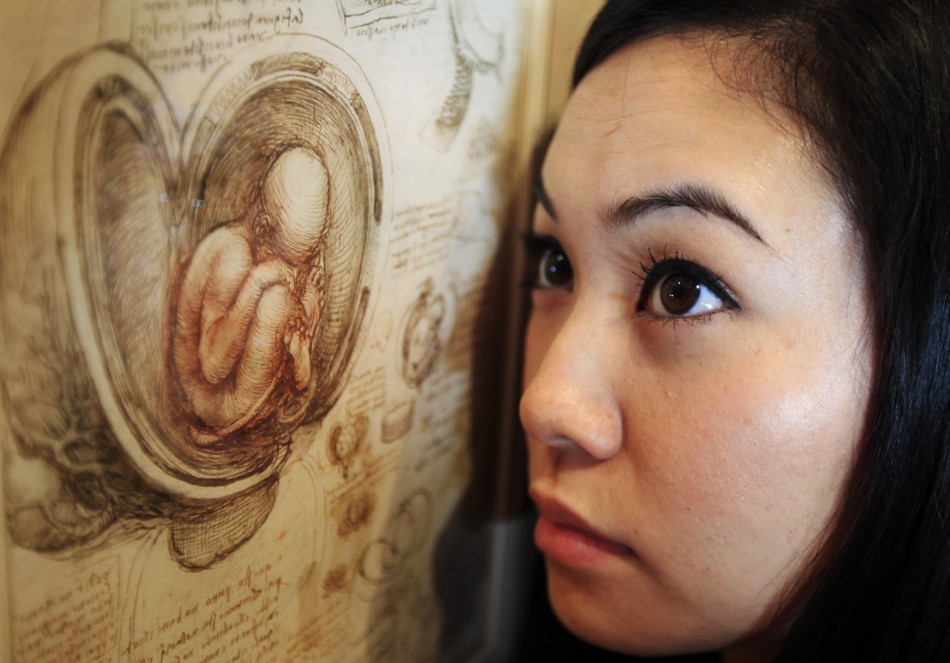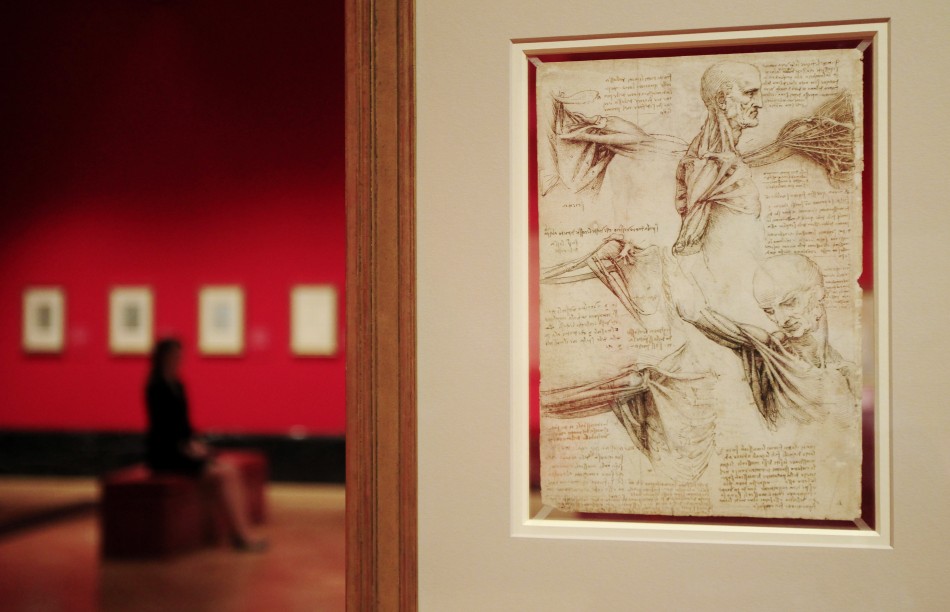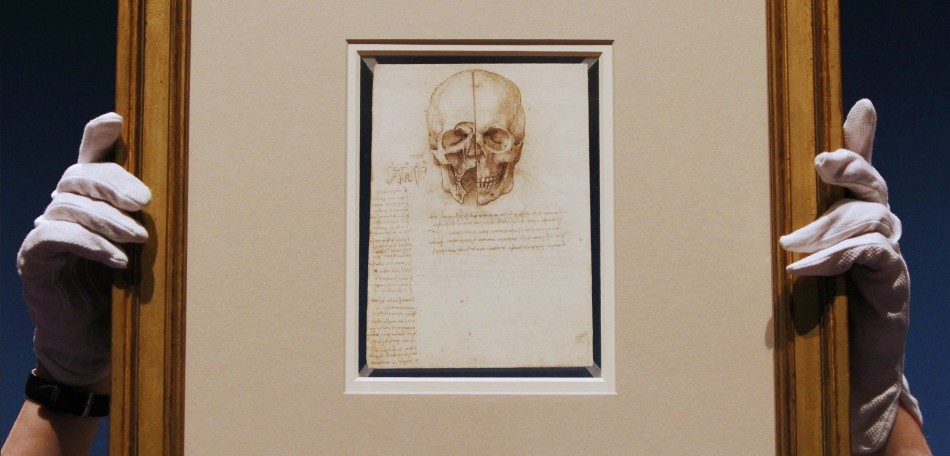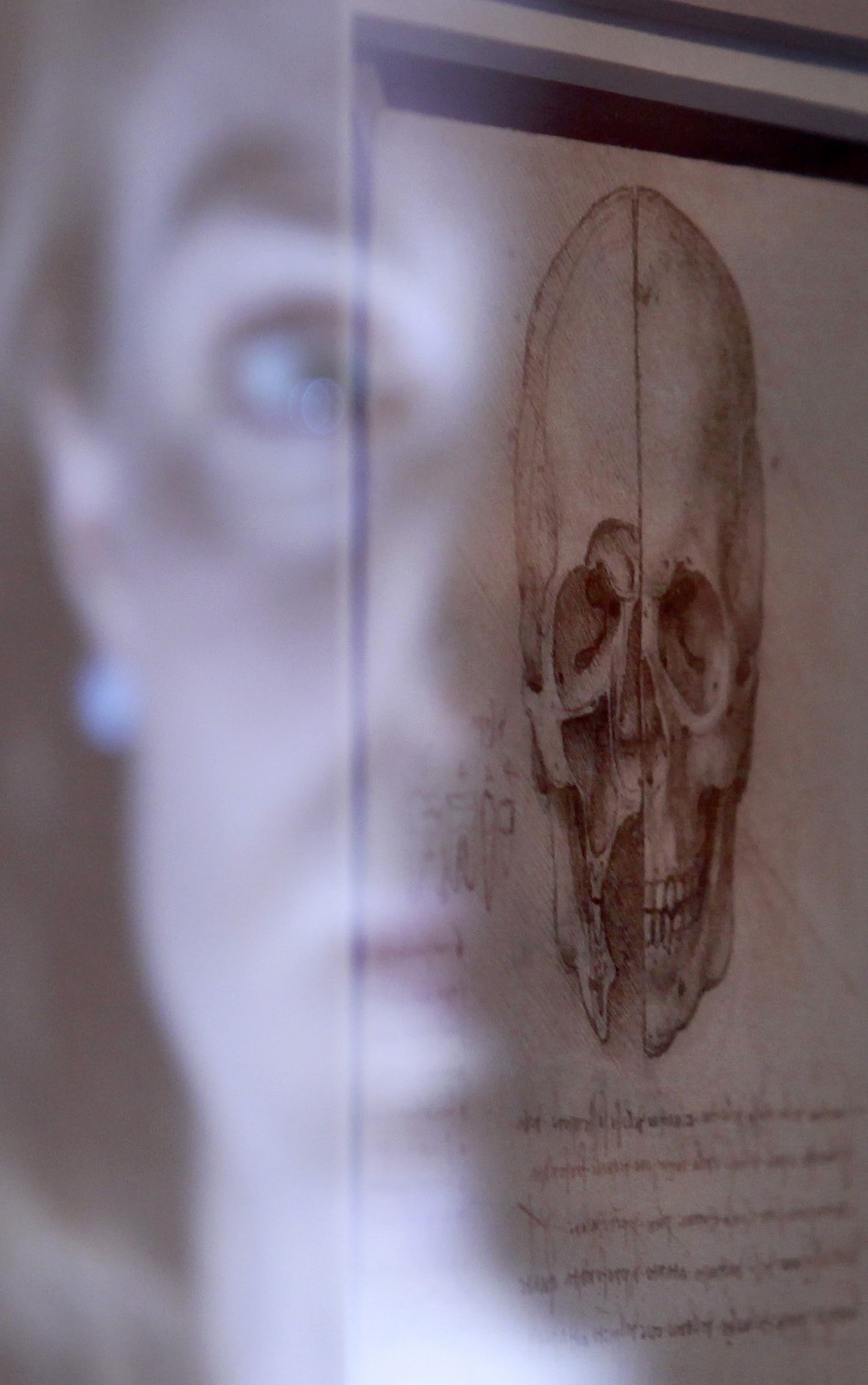Leonardo Da Vinci's 24 Rare Drawings Unveiled at Buckhingham Palace: A Genius Ahead of His Time [SLIDESHOW]
An exhibition of drawings by Renaissance intellectual Leonardo Da Vinci, being held at the Buckingham Palace, reinforces the idea that the Italian was an artist ahead of his times and was, in addition to all his other talents, a wonderful anatomist. The sketches were kept under lock and key by the Queen at the Buckingham Palace all these years.
"Indeed his findings dating from the late 1490s and early 1500s were so revolutionary that some could not be conclusively proved until the development of Magnetic Resonance Imaging [MRI] scanners in the 1980s," the Daily Mail reports. Apparently Da Vinci even analysed heartbeats and the pattern of circulation, as well as other details that would not be proven or demonstrated for another century.
The artist emphasised the need to be "true to nature" in all his work and so often dissected animals and unclaimed human bodies for his research, also starting a "campaign of dissection in hospitals and medical schools throughout Florence". However, his death in 1519 led to the disappearance of his findings for over 400 years. His greatest discovery, according to the paintings, was the circulation of the blood via the heart.
According to the Royal Collection's curator Martin Clayton, Da Vinci became fascinated with a swelling he discovered at the root of the aorta, just beneath the aortic valve. His practical work included using an ox as a test subject.
"To say that Leonardo was a man ahead of his time doesn't even come close to describing his genius. His drawings are among the finest depictions of the human body ever created. Had he published this work, he would now be known as one of the greatest scientists in history," explained Clayton.
In 1508, Da Vinci correctly identified a blocked artery as the cause of death for a man, without any of the modern scientific instruments.
"And this old man, a few hours before his death, told me that he was over 100 years old and that he felt nothing wrong with his body other than weakness... And I dissected him to see the cause of so sweet a death," Da Vinci wrote.
"Other studies concentrate on muscle form and the body's reproductive organs, particularly the formation of embryos, with astonishingly detailed drawings of babies still inside their mother's bodies. One study illustrating every bone in the human body is accompanied by 240 individual drawings of astounding clarity and more than 13,000 words of notes - all in his famed 'mirror writing'," the Daily Mail reports.
"For me as an anatomist, what Leonardo did was bringing all his disciplines of architecture, geometry, and engineering and combines it with an art expression that was quite unique. He put all these things together to try and explain not only how things looked but how things worked, and in that he was certainly unique. If you were to take ten specialists in the fields of which he worked, geometry, anatomy, physiology, engineering and architecture, I doubt if ten professors in those fields would have the knowledge base and talents that Leonardo had," Peter Abrahams, Professor of Clinical Anatomy at Warwick Medical School said.
The exhibition "Leonardo da Vinci: Anatomist" will run till October.




© Copyright IBTimes 2025. All rights reserved.





















